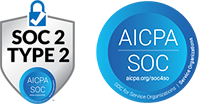An HR database is a centralized system designed to store, manage, and retrieve employee and organizational data. It serves as the backbone of HR operations, housing critical information such as employee demographics, payroll records, performance data, benefits details, and compliance documentation.
In People Analytics, HR databases play a pivotal role in consolidating workforce data, enabling analytics tools like SplashBI to extract meaningful insights. These databases ensure that data is organized, secure, and accessible for various HR functions, including recruitment, onboarding, training, and performance management.
For example, an HR database might include fields for employee ID, department, job title, salary, and attendance records, all of which can be analyzed to track productivity or identify trends in attrition.
Importance of HR Databases in People Analytics
HR databases are essential for efficient workforce management and analytics. Here’s why they matter:
- Centralized Data Repository: An HR database consolidates data from multiple sources, such as HRIS, payroll systems, and ATS, into a single location. This reduces silos and ensures that HR teams have a unified view of workforce information.
- Streamlined HR Operations: With all employee data in one place, HR teams can efficiently manage tasks like tracking attendance, processing payroll, or conducting performance reviews.
- Enabling People Analytics: HR databases provide the raw data needed for advanced analytics, helping organizations uncover patterns, predict trends, and make data-driven decisions.
- Compliance and Data Security: HR databases ensure that employee data is stored securely and meets compliance standards, such as GDPR or local labor laws, protecting both the organization and its employees.
- Scalability for Growing Organizations: As organizations grow, HR databases can scale to accommodate larger datasets, ensuring that HR operations remain efficient and effective.
Challenges in Managing HR Databases
- Data Quality Issues: Inconsistent or incomplete data can compromise the reliability of analytics.
- Integration with Other Systems: Connecting disparate tools and platforms to the database can be complex.
- Data Security Risks: Protecting sensitive employee information from breaches or unauthorized access is critical.
- Dynamic Workforce Needs: As workforce trends evolve, databases must adapt to store new types of data or metrics.
SplashBI’s Role in Optimizing HR Databases
SplashBI enhances the value of HR databases by integrating seamlessly with them, extracting actionable insights, and ensuring that data is accurate and ready for analysis.
- Seamless Integration with HR Systems: SplashBI connects directly to leading HR databases, such as those within Workday, Oracle Fusion Cloud, and SAP SuccessFactors. This integration ensures real-time access to workforce data without manual data transfers.
- Data Cleaning and Validation: SplashBI ensures that the data pulled from HR databases is clean, consistent, and ready for analysis. It identifies and resolves issues like duplicate entries or missing fields, improving data reliability.
- Comprehensive Analytics: By leveraging data from HR databases, SplashBI enables organizations to generate insights into key metrics like employee turnover, engagement levels, and compensation trends. For example, HR teams can analyze attendance data to identify patterns that affect productivity.
- Customizable Dashboards: SplashBI transforms raw database data into intuitive dashboards tailored to HR needs. These dashboards provide at-a-glance insights into workforce performance, diversity, and compliance metrics.
- Secure Data Management: With robust security features, SplashBI ensures that sensitive employee data remains protected throughout the analytics process. This includes encryption, role-based access controls, and adherence to compliance standards.
- Scalable for Enterprise Needs: SplashBI supports organizations of all sizes, enabling HR teams to analyze data from growing databases without compromising speed or accuracy.
Conclusion
HR databases are the foundation of effective workforce management and analytics, centralizing critical employee information to drive data-driven decision-making. With SplashBI, organizations can unlock the full potential of their HR databases, ensuring data quality, security, and actionable insights for better workforce outcomes.
Explore how SplashBI integrates with HR databases to empower your People Analytics.



